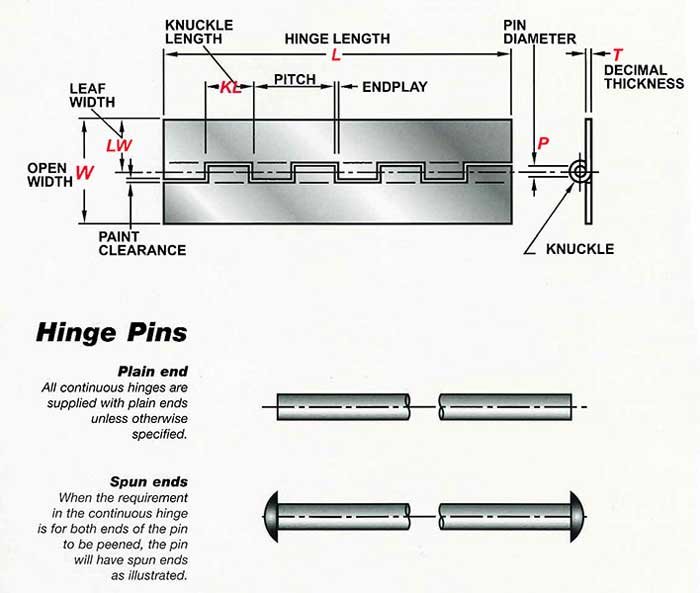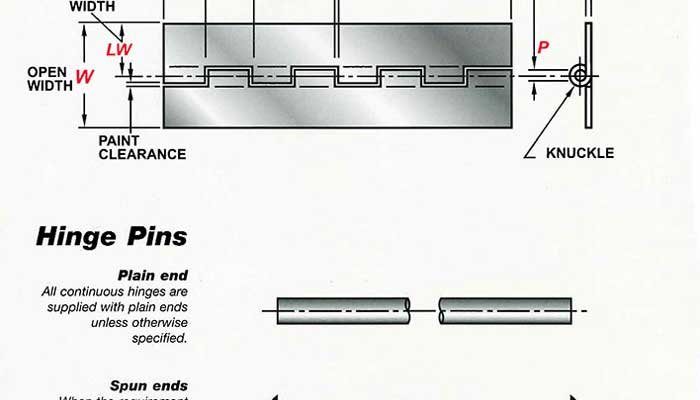
If you’ve ever tried to fix a noisy hinge with a squirt of WD-40 only to have the squeak come back, you’re not alone. Here’s the thing: not all hinges are built the same, and sometimes a simple lube job won’t cut it. Understanding what type of hinge you have—and why it’s squeaking—can save you a lot of time (and a few headaches). Let me explain how you can figure out what’s going on, step by step, without feeling like you need a degree in mechanical engineering.
Spotting the Difference: Pin vs. Barrel vs. Leaf Hinges
Before you can fix a squeaky hinge, you’ve got to know what kind you’re working with. Just like you wouldn’t use AAA batteries in a device that takes AA, matching the fix to the hinge type matters. Here’s how to tell them apart:
- Pin hinges have a long metal pin running through the middle. This pin is what holds the two flat plates—called “leaves”—together. If you see a little cap at the top or bottom of your hinge, and maybe a visible seam down the center, you’re probably looking at a pin hinge.
- Barrel hinges look more cylindrical, almost like tiny metal barrels. They’re often used on heavier doors or gates, and the actual hinge mechanism is hidden inside a round casing. These can be harder to spot unless you look closely.
- Leaf hinges are the “standard” kind most people picture. They have two flat plates that attach to the door and the frame. The leaves pivot around a central pin, but the pin itself isn’t always easy to see unless you look from above or below.
So, if you’re looking at a hinge and it’s a simple, flat shape attaching door to frame, that’s likely a leaf hinge. If it’s more of a cylinder, think barrel. If it has a visible pin you can drive out, you’ve got yourself a pin hinge.
Why Exterior Hinges Get Squeaky in the First Place
Let’s talk about what causes all that noise. Hinges are like the knees of your house: they work hard, and over time, they can start to complain. Outdoor hinges face extra wear and tear because of humidity, temperature swings, and even a bit of rain or dust.
The main culprits for squeaky hinges are:
- Lack of lubrication—This is the
- Rust or corrosion—Especially common for exterior doors. Water sneaks in, metal oxidizes, and suddenly every opening comes with a sound effect.
- Dirt or debris—Even a tiny pebble or bit of sand can get trapped in a hinge and start trouble.
- Misalignment—If your door isn’t hanging straight, the extra pressure can make the hinge work harder, which eventually leads to squeaking.
Honestly, most squeaks are just a cry for a little care. But if you ignore them, they can turn into bigger problems—like a hinge that snaps or a door that refuses to close.
Diagnosing a Squeaky Pin Hinge
If you spot a visible pin running through your hinge, diagnosing the squeak is pretty straightforward. Here’s what I do:
- Listen closely: Slowly swing the door open and shut. If you hear a high-pitched screech, the pin’s probably dry or dirty.
- Look for rust: Check for orange-brown streaks near the pin. A little corrosion means it’s time for cleaning and maybe a new pin if it’s too far gone.
- Move the pin: If you’re comfortable, use a screwdriver and hammer to tap the pin up slightly. Sometimes, even a tiny movement will tell you if the pin is stuck or gritty.
A quick tip: *Don’t* drown it with oil right away. If the pin’s full of gunk, adding lubricant might just make a nasty paste. Clean first, then oil or grease as needed.
How to Troubleshoot a Squeaky Barrel Hinge
Barrel hinges are a little trickier since the moving parts are hidden. But that doesn’t mean you’re out of options.
First, check if your door or gate feels especially heavy or “sticky” when you open it. If the squeak is coming from the location of a barrel-shaped hinge, there’s a good chance the internal pin or bushing is dry (or worse, worn out).
Here’s how I approach these:
- Wiggle test: Gently move the door up and down (not just open and closed). If you feel looseness or grinding, the hinge might need more than just lubrication—like a full replacement.
- Spot the seep: Sometimes you’ll see a faint line of rust or oil leaking from one end. That’s your hint where the trouble lies.
- Targeted lubrication: Use a thin straw applicator to get oil inside the barrel casing. Just don’t overdo it, or you might stain your door or frame.
Barrel hinges are made for strength, not easy maintenance. If you can’t quiet them down after a couple of tries, don’t be afraid to call in help—especially for heavier gates or security doors.
Finding the Problem with a Noisy Leaf Hinge
Leaf hinges are the most common type you’ll see on exterior doors, especially with brands like Stanley, Baldwin, or Schlage. They’re simple, sturdy, and usually easy to fix—but that doesn’t mean every squeak is solved the same way.
Here’s what I look for:
- Check alignment: If the door rubs or sticks, the leaves might be bent or the screws could be loose. Tighten them up, but don’t strip the heads.
- Examine the finish: If the paint or coating is worn away, bare metal squeaks more easily. A little touch-up goes a long way.
- Clean the crevices: Use a toothbrush or soft cloth to wipe away any dust or debris hiding in the corners. *Then* add lubricant.
Honestly, most noisy leaf hinges just need some cleaning and a drop or two of oil. But if you see cracks or warping, it might be time for a replacement. No shame in swapping out a worn-out hinge—it happens to the best of us.
Lubricating Your Hinges: Best Practices and Common Mistakes
So, you’ve found the noisy culprit. Before you reach for the first can of lubricant you see, let me walk you through the right (and wrong) ways to handle squeaky hinges. Not all fixes are created equal, and the wrong approach can come back to haunt you.
- Use the right lubricant: WD-40 is great for a quick fix, but for lasting results, grab a silicone spray, lithium grease, or even a dab of petroleum jelly. These stick around longer and don’t attract as much dust.
- Don’t over-apply: More isn’t always better. Too much lubricant can drip or pool, attracting grime and making things worse in the long run.
- Work it in: Open and close the door several times after lubricating. This helps spread the product evenly over all the moving parts.
- Catch drips: Lay down a towel or paper under the hinge before you start. Your floors will thank you.
Here’s the thing—sometimes the hinge just needs a little TLC, and other times, it needs an upgrade. If you’ve tried everything and the squeak is still there, don’t hesitate to swap the hinge or call a pro. Your ears (and neighbors) will appreciate it.
When to Replace vs. Repair Your Squeaky Exterior Hinge
Alright, you’ve cleaned, lubed, and tightened everything up. But what if the squeak just won’t quit? This is where you have to decide: is it worth fixing, or is it time to swap out the hinge entirely?
Repair: Stick with this option if the hinge is just dirty, a little rusty, or slightly misaligned. A bit of elbow grease (and maybe a reset or re-seating of the pin) might be all it needs. Most common exterior leaf or pin hinges can handle years of troubleshooting before they truly wear out.
Replace: Go this route if you see any of these warning signs:
- Deep rust or corrosion that won’t come off
- Bent or cracked metal (especially on barrel hinges)
- Obvious damage to the pin—like warping, missing chunks, or wobbling
- The door no longer syncs up with the frame, even after adjustments
Don’t worry—swapping out a hinge is easier than reprogramming a universal remote. Most brands offer direct replacements, and with the right screwdriver, you’re good to go.
How Hinge Type Affects Squeak Diagnosis (And Why It Matters)
You might be wondering why anyone should care about pin vs. barrel vs. leaf hinges. The truth? The type of hinge affects everything: *where* the squeak comes from, *how* you fix it, and even *what tools or lubricants* you should use.
- Pin hinges are easy to take apart, clean, and reset. If you want a deep fix, you can remove the pin, scrub it, and put it back better than new.
- Barrel hinges hide the moving parts. Sometimes you can only lubricate or replace them as a whole. No individual pins to reset.
- Leaf hinges give you direct access to the moving area but might need both leaves lubed and checked for bending or loose screws.
Knowing what hinge you have means no guessing games. You can troubleshoot smarter, save time, and keep your door moving smoothly—without accidentally making things worse.
Closing Thoughts: Keeping Squeaks at Bay for Good
At the end of the day, a squeaky exterior hinge is just your home nudging you for a little attention. Whether you’re dealing with a classic pin hinge, a sturdy barrel hinge, or a standard leaf hinge, the basics are the same: figure out the type, spot the problem, and take the right steps to fix it. Sometimes the solution is as simple as a quick clean and a dab of lube. Other times, you might need to reset, repair, or replace the hinge entirely.
The good news? Diagnosing a squeaky hinge doesn’t have to be complicated or expensive. With a keen ear, a bit of patience, and the right know-how, you’ll have your door swinging quietly again in no time. And hey, you might even avoid a few startled pets and annoyed neighbors along the way.
